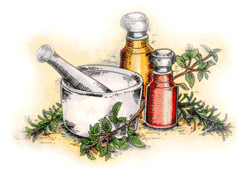 Abdominal Injury Abdominal Injury |
 Achilles Tendon Achilles Tendon |
 Ankle Bone Injury Ankle Bone Injury |
 Ankle Strain Ankle Strain |
 Ankle Synovitis Ankle Synovitis |
 Arm And Shoulder Tenosynovitis Arm And Shoulder Tenosynovitis |
 Arm Contusion, Forearm Arm Contusion, Forearm |
 Arm Contusion, Radial Nerve Arm Contusion, Radial Nerve |
 Arm Contusion, Upper Arm Injury Arm Contusion, Upper Arm Injury |
 Arm Exostosis Arm Exostosis |
 Arm Fracture, Forearm Arm Fracture, Forearm |
 Arm Fracture, Humerus Arm Fracture, Humerus |
 Arm Strain, Biceps Injury Arm Strain, Biceps Injury |
 Arm Strain, Forearm Arm Strain, Forearm |
 Arm Strain, Triceps Arm Strain, Triceps |
 Arm Strain, Upper Arm Arm Strain, Upper Arm |
 Back, Ruptured Disk Injury Back, Ruptured Disk Injury |
 Back Sprain, Lumbo Dorsal Region Injury Back Sprain, Lumbo Dorsal Region Injury |
 Back Sprain, Sacroiliac Region Injury Back Sprain, Sacroiliac Region Injury |
 Back Strain, Dorsal or Thoracic Spine Region Back Strain, Dorsal or Thoracic Spine Region |
 Back Strain, Lumbar Spine Region Back Strain, Lumbar Spine Region |
 Bee Sting Bee Sting |
 Bladder or Urethra Injury Bladder or Urethra Injury |
 Breast Contusion Breast Contusion |
 Breastbone Sprain Breastbone Sprain |
 Burns Burns |
 Buttock Contusion Buttock Contusion |
 Chest Muscle Strain Chest Muscle Strain |
 Collarbone Area Strain, Deltoid Muscle Collarbone Area Strain, Deltoid Muscle |
 Collarbone (Clavicle) Contusion Collarbone (Clavicle) Contusion |
 Collarbone Dislocation - Shoulder Joint Collarbone Dislocation - Shoulder Joint |
 Collarbone Fracture, Outer End Collarbone Fracture, Outer End |
 Collarbone Fracture, Shaft Midportion Collarbone Fracture, Shaft Midportion |
 Corneal Abrasion Corneal Abrasion |
 Dog Bites Dog Bites |
 Ear Injury Ear Injury |
 Elbow Bursitis, Radio-Humeral Elbow Bursitis, Radio-Humeral |
 Elbow Contusion, Ulnar Nerve Elbow Contusion, Ulnar Nerve |
 Elbow Contusion Elbow Contusion |
 Elbow Dislocation Elbow Dislocation |
 Elbow Fracture, Coronoid Process Elbow Fracture, Coronoid Process |
 Elbow Fracture, Epicondyle Elbow Fracture, Epicondyle |
 Elbow Fracture, Lower Humerus Elbow Fracture, Lower Humerus |
 Elbow Fracture, Radius Elbow Fracture, Radius |
 Elbow Fracture, Ulna Elbow Fracture, Ulna |
 Elbow Sprain Elbow Sprain |
 Elbow Strain Elbow Strain |
 Elbow Tendinitis or Epicondylitis Elbow Tendinitis or Epicondylitis |
 Eye Injury Eye Injury |
 Face Contusion Face Contusion |
 Snakebite Snakebite |
 Spider Bites Spider Bites |
 Tick Bites Tick Bites |
|
|
Home :: Elbow Tendinitis
Elbow Tendinitis or Epicondylitis
Elbow tendinitis is a common disorder among physically active individuals that have a good prognosis but may require three to six months to resolve even with optimal management (1). Lateral epicondylitis or 'tennis elbow' is the pain and discomfort associated with 'inflammation' at the extensor muscle group origin at the lateral humeral condyle insertion, principally in the extensor carpi radialis brevis (ECRB) tendon. Medial epicondylitis or 'golfer's elbow' is less common but tends to be more difficult to treat. The affected area is at the interface between the pronator teres and flexor carpi radialis origin at the medial humeral condyle.
lnflammation of muscles, tendons, bursa, or covering to bones (periosteum) at the elbow.
BODY PARTS INVOLVED
Elbow muscles, tendons and one or both of the epicondyles (bony prominences on the sides of the elbow where muscles of the forearm attach to the bone of the upper arm).
Causes
Partial tear of the tendon and attached covering of the bone caused by:
- Chronic stress on the tissues that attach the forearm muscles to the elbow area.
- Sudden stress on the forearm.
- Wrist snap when serving balls in racket sports.
- Incorrect grip.
- Incorrect hitting position.
- Using a racket or club that is too heavy.
- Using an oversize grip.
Signs & Symptoms
- Pain and tenderness over the epicondyles. Pain worsens with gripping or rotation of the forearm.
- Weak grip.
- Pain when twisting the hand and arm, as when playing tennis, throwing a ball with a twist, bowling, golfing, pushing off while skiing or using a screwdriver.
Treatment
Follow your doctor's instructions. These instructions are supplemental.
- Use heat to relieve pain. Use warm soaks, a heating pad or a heat lamp. You may receive diathermy or ultrasound (see Glossary), whirlpool or massage treatments in your doctor's office or a physical-therapy facility. These may bring quicker symptom relief and healing.
- You may need to wear a forearm splint to immobilize the elbow.
Home Diet
During recovery, eat a well-balanced diet that includes extra protein, such as meat, fish, poultry, cheese, milk and eggs.
Prevention
- Don't play sports, such as tennis, for long periods until your forearm muscles are strong and limber. Take frequent rest periods.
- Do forearm conditioning exercises to build your strength gradually.
- Warm up slowly and completely before participating in sports-especially before competition.
- Proper conditioning
- Get lessons from a professional if you are a novice.
- Use a tennis-elbow strap when you resume normal activity after treatment.
- Wearing appropriate shoes for the activity
|
|


